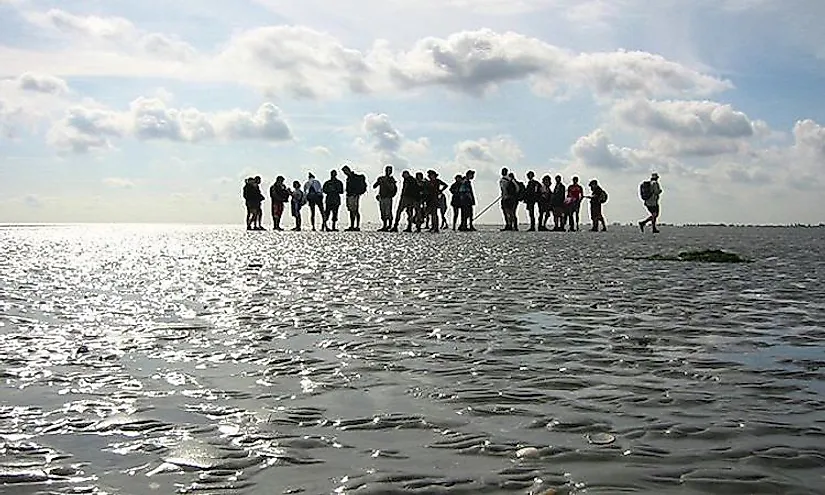What Is A Mudflat? Why Are Mudflats Important?

What Is A Mudflat?
Mudflats refer to land near a water body that is regularly flooded by tides and is usually barren (without any vegetation). Also known as tidal flats, mudflats are formed upon the deposition of mud by tides or rivers. This coastal landform usually occurs in sheltered areas of the coast like bays, coves, lagoons, estuaries, etc. Since most of the sedimented area of a mudflat is within the intertidal zone, the mudflat experiences submersion under water and exposure twice daily.
The Mudflat Habitat
Mudflats, mangroves, and salt marshes together constitute an important ecosystem. Mudflats attract a large number of migratory shorebirds. These intertidal areas also house a number of species of crabs, fish, and mollusks which form the food base for the migratory birds. Thus, mudflats are often significant bird-watching spots.
Why Mudflats Need Protection?
Mudflats protect the inland landforms from erosion. They act as a barrier to waves from eroding land in the interior. However, mudflats across the world are in danger of destruction and under extreme threat from coastal developmental activities. Dredging for navigational needs, chemical pollution, etc., are threatening the mudflat habitats. Also, global warming-triggered sea level rise is submerging significant sections of mudflats. The loss of these tidal flats will make coastal areas vulnerable to the forces of erosion and also floods. More than 65% of the mudflats around the Yellow Sea have been destroyed over the past 50 years.
Tourist Activities In Mudflats
Although mudflats in many places were considered to have no economic potential, in recent times, mudflats have been developed to engage tourists in a popular activity called mudflat hiking. Usually, shallow mudflat areas are chosen for mudflat hiking. This sport is already popular in northwest Germany, Denmark, and the Netherlands. Tourists, with the help of the tide table, walk and wade on the mudflat watershed during the time of low tide. The mudflats on the Wadden Sea coasts are an ideal environment for mudflat hiking. Mudflat hiking is not completely free of danger. One must be well aware of the dangers of the mudflat area since small miscalculations might lead to one being stranded amidst rising water on all sides. Thus, it is always advised that mudflat hiking be carried out in the presence of an expert guide who knows the place well and can keep the hikers away from the dangers of the sea.











